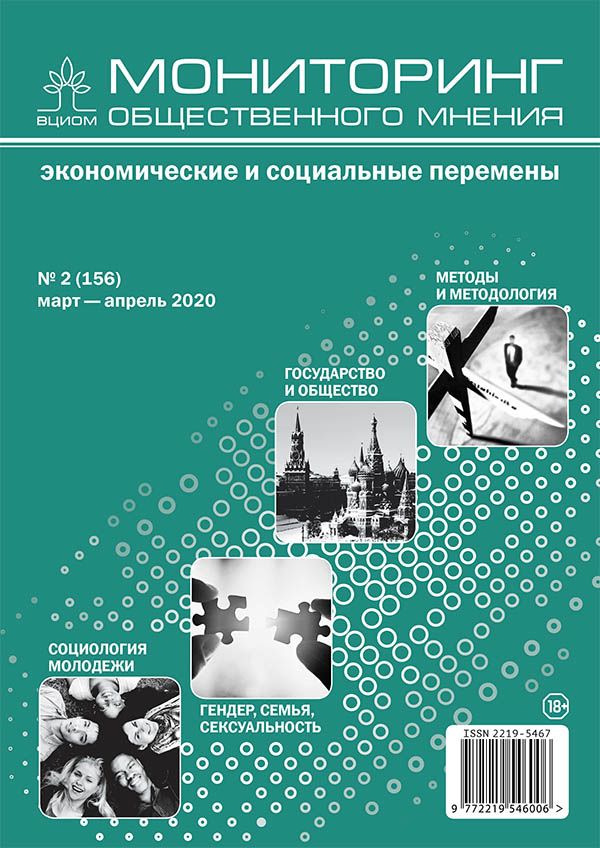Adaptation Factors of Migrants from Rural Area: Peoples of Siberia Case Study (the Khakass People)
DOI:
https://doi.org/10.14515/monitoring.2020.2.635Keywords:
adaptation, rural migrants, external factors, socio-demographic characteristics, levels of adaptability, Khakass peopleAbstract
The paper analyzes the results of a study on the adaptive capacity of the Khakass people, indigenous people living in Siberia. Various papers and statistical data show that the Khakass people are experiencing difficulties trying to adapt to urban lifestyle. That is why the focus of the paper is to study major factors helping this people to fit into the urban environment. The article is based on the data of a survey conducted among those Khakass who left their rural communities and currently reside in the urban localities across Khakassia (n = 403). The integrated index of adaptive capacity was used to assess how successful the newcomers are. Depending on the index values all the respondents were divided into three levels of adaptive capacity: low (128 respondents), average (139 respondents) and high (136 respondents). Correlation analysis was used to examine the relationship between the levels of adaptive capacity and different factors: Pearson's correlation coefficients were calculated and analyzed.
The results show that the level of adaptive capacity among respondents varies depending on socio-demographic characteristics of the newcomers (their age, family status, presence of children, level of education), correlates to certain socio-economic factors (employment, nature of work, living conditions). The author concludes that the situation in the region encourages rural population to move into cities (a relatively high (for Siberia) level of urbanization, ethnic diversity). However, certain factors prevent the indigenous population from gaining a foothold in a city (self-perception as an ethnic minority, inertia hindering them in the pursuit of radical changes).
Acknowledgments. Grant from the Russian President to support young Russian scientists (no. МК-6401.2018.6).






